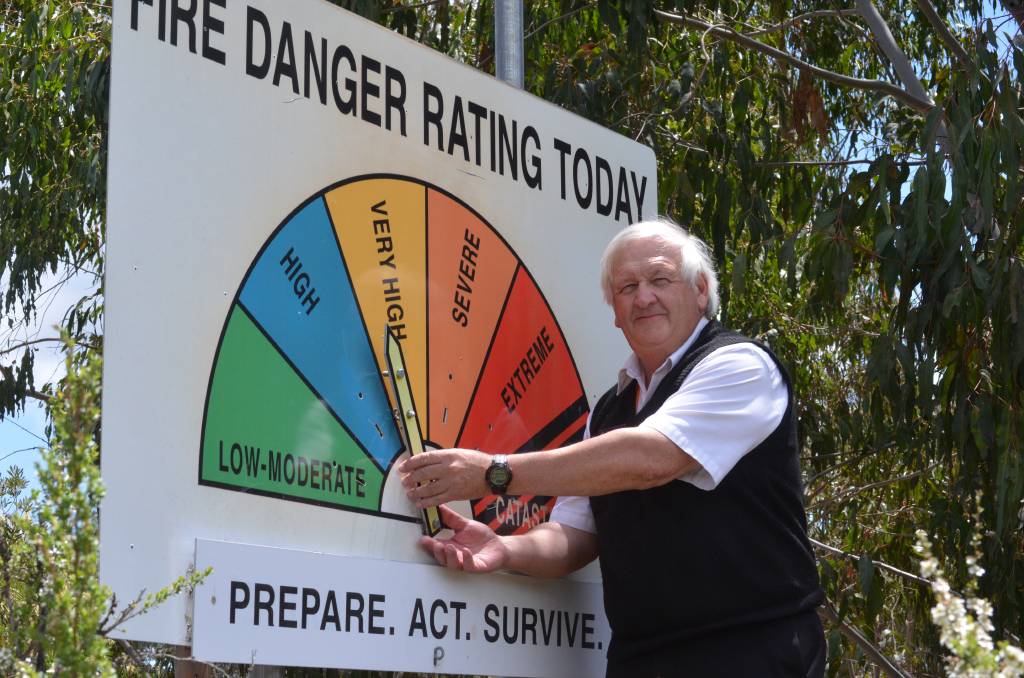Weekend’s rain good for orchardists, NSW RFS still worried about bushfire risk
Published Date: 23 Nov 2017
Summary
Rain may have dampened the ground over the weekend, however it did little to reduce the expected bush fire risk across the region.
View the Central Western Daily story
Around 17.6 millimetres was recorded at Orange Regional Airport on Saturday.
That rain doesn’t mean farmers or rural residents can worry any less about fires according to the NSW Rural Fire Service (RFS).

RFS Canobolas Zone technical officer Geoff Selwood adjusts a fire danger rating warning sign on Wednesday.
NSW RFS Canobolas Zone technical officer Geoff Selwood said orchardists around Orange would have benefited the most from the rain.
“Across the zone we’ve had an increase in grass curing,” Mr Selwood said.
“That 17 millimetres of rain will have dried out in 48 hours.”
Mr Selwood said he monitored the level of “grass curing” and bushfire risk.
He said around 60 millimetres had fallen around Cowra and some hail had damaged some farmers’ canolas crops.
Mr Selwood said when grasses went to seed they would begin turning yellow and hold less moisture – meaning a fire is more likely to take hold.
“Once grasses go to seed or have seeded, rain will lead to move growth,” he said.
Due to the low level of rain through winter Mr Selwood said the amount of grass wasn’t enough to present a significant risk.
However, while the risk wasn’t deemed significant, weather conditions could still lead to lives and property being threatened in the event of a bushfire.
“The grasslands fire risk was not as significant as it was last year,” he said.
“Where native gum trees are is where the worry is going to be.
“The rain is filtered through the tree tops and by the time it gets to the ground it dries quickly.”
Mr Selwood said eucalyptus and native forests at the top of Mount Canobolas plus the Nangar, Goobang and Conimbla national parks were what RFS staff in Canobolas Zone were worried about.
He said areas around Mullion Creek and Mullion Range through to Lower Lewis Ponds and on to Neville were also being carefully monitored.
He said the pine trees in state forests around Orange weren’t as big of a concern as they were in the process of being harvested effectively reducing the risk they posed.



